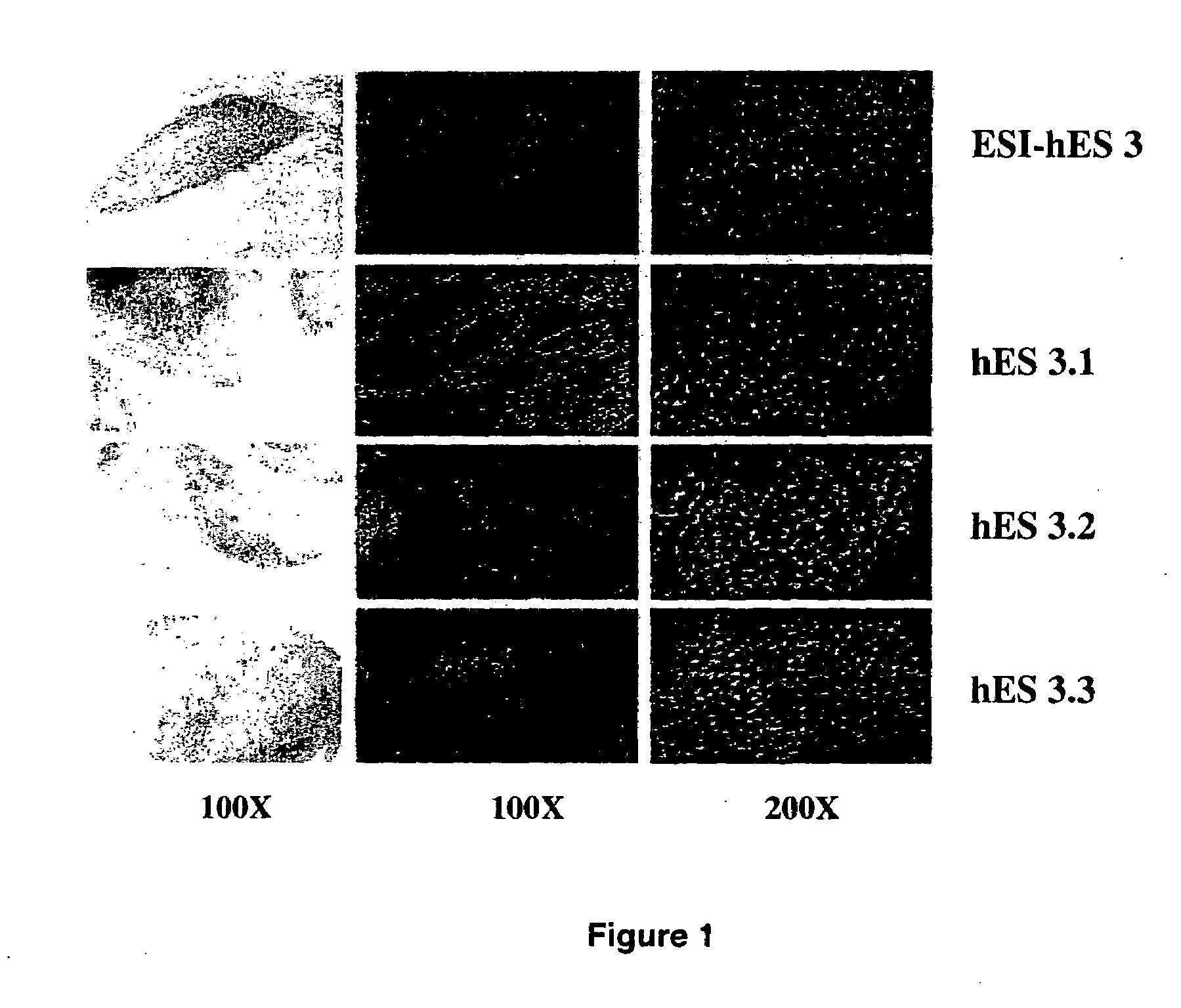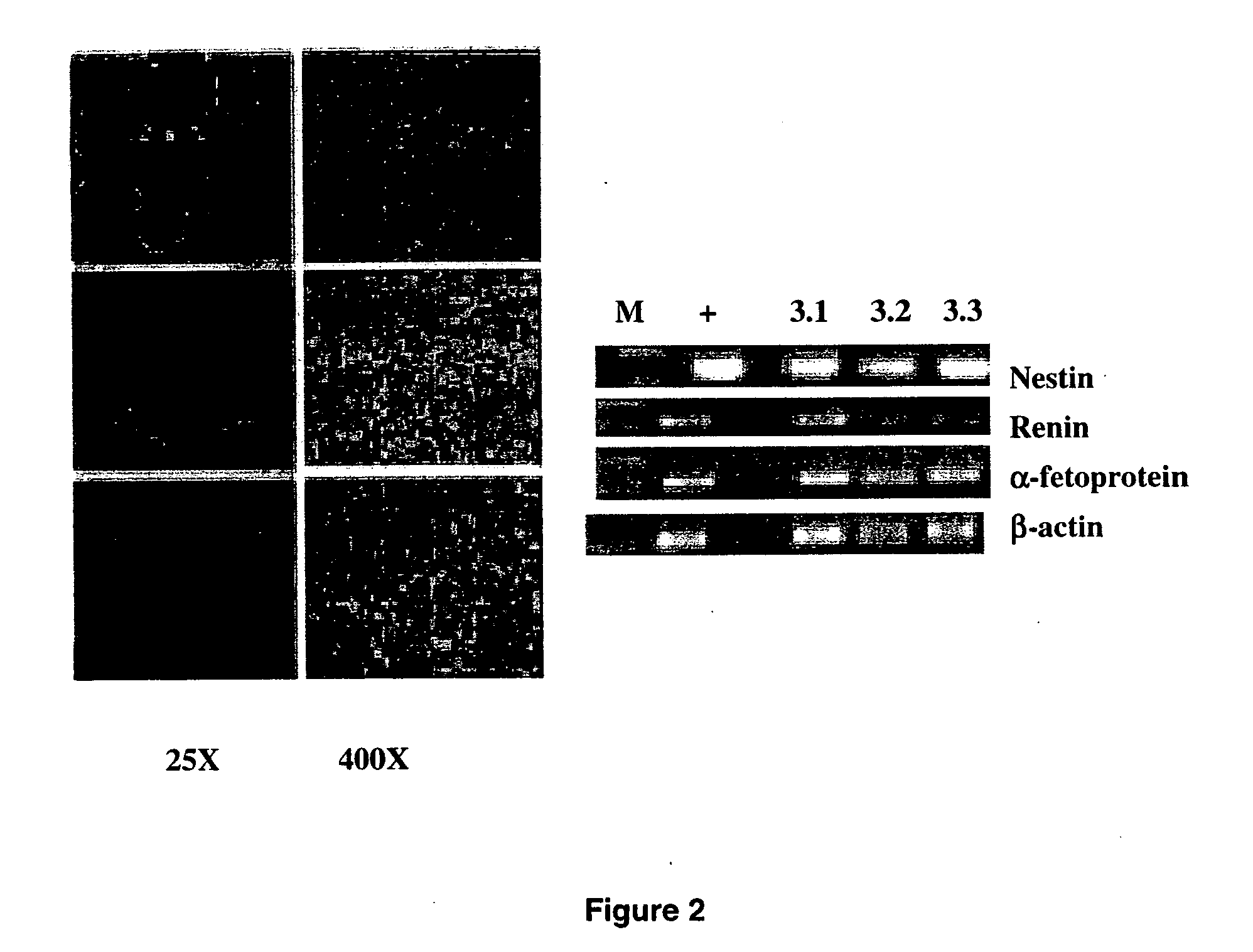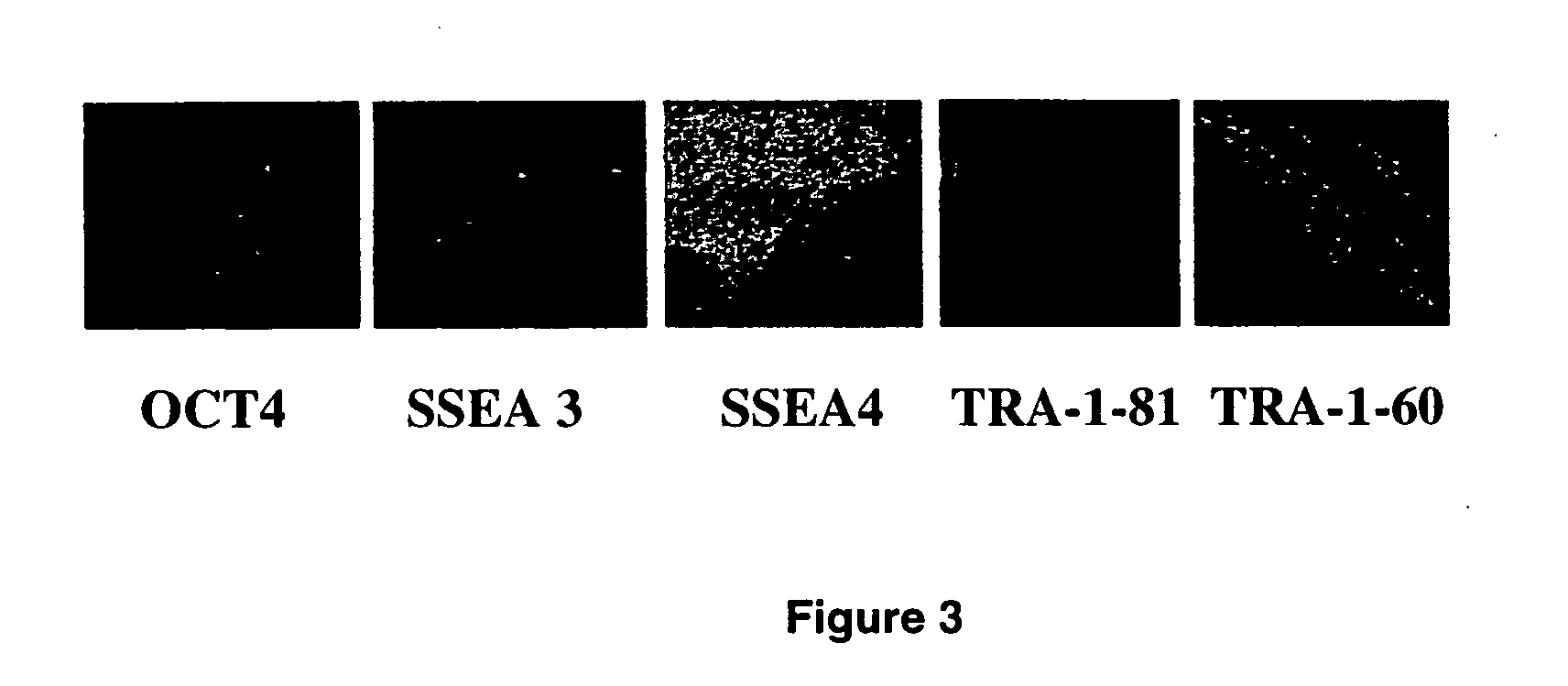Human embryonic stem cell clones
a technology of embryonic stem cells and human embryos, which is applied in the field of human embryonic stem cell clones, can solve the problems of difficult comparison between lines, inability of escs to develop into humans, and serious limitations in the scientific community
- Summary
- Abstract
- Description
- Claims
- Application Information
AI Technical Summary
Benefits of technology
Problems solved by technology
Method used
Image
Examples
example 1
Methods and Materials for Human Embryonic Stem Cell Culture
[0102]All reagents including culture media and sera were obtained from Gibco / lnvitrogen (Carlsbad, Calif. USA, www.invitrogen.com).
[0103]The human ESC line, ESI-hES3, was obtained from Embryonic Stem Cell International Pte Ltd. Singapore. The human ESC line, hES3, which constitutively expresses GFP (Envy line), was obtained from the Monash Immunology and Stem Cell Laboratories, Melbourne (courtesy Dr Andrew Elefanty). The Endeavour-1 cell line was derived by the inventors and has been deposited with the China Centre for Type Culture Collection (CCTCC) on 6 Jan. 2006 under Accession number C200602. hESC colonies were maintained in gelatin-coated six well culture plates (Becton Dickinson, N.J., USA; www.bdbiosciences.com) on gamma-irradiated (45 Gy) primary human fetal fibroblast (HFF; passage 6) feeder layers (1.5×106 cells / ml) and cultured at 37° C., 5% CO2 in serum replacer (SR) medium consisting of Dulbecco's knockout (KO-...
example 2
Preparation of Single hES Cell Preparations
[0106]Aliquots of 300-400 hESC colonies, including aliquots from the Envy line, were dissected from six well plates by gently washing twice and with collagenase type IV (1 mg / ml in phosphate buffered saline (PBS) without Ca2+; 1 ml / well) treatment for 7 min at 37° C. hESC colonies were allowed to settle at the bottom of a 15 ml tube for 5 min and supernatant was aspirated. hESC colonies were dissociated into single cells by using 0.05% trypsin / 0.25% EDTA at 37° C. for 7 min, triturated carefully twice with a pipette. Finally, cell preparations were re-suspended at 1×106 cells / ml in conditioned medium collected from HFF cultured in SR medium for 24 h.
example 3
FACS Sorting of hES Single Cell Preparations
[0107]A FACScalibur (Becton Dickinson, Sydney) was used to select only hESC derived from the hESC line designated ESI-hES3 by gating on size and forward-scatter (FSC). The exclusive selection of stem cells by this procedure was confirmed by using FACS sorting of a single cell preparation (see Example 2) from an Envy hES line that consitutively expresses GFP. Each cell was dispensed into a well of a 96 well plate containing HFF as a feeder layer in SR medium with 5% CO2 at 37° C. for two weeks. The dispersion of single stem cells into each well of the 96 well plate was therefore confirmed by using a single cell preparation from the Envy hES3 line and visualization under a fluorescent microscope. The viability of single hESCs after FACS was >98% as assessed by fluorescent staining with carboxyfluorescein diacetate (CFDA) and propidium iodide (PI). Briefly, hESC were washed with 500 μL PBS at 800 rpm for 3 min and re-suspended in 250 μL CFDA ...
PUM
| Property | Measurement | Unit |
|---|---|---|
| fluorescence activated cell sorting | aaaaa | aaaaa |
| fluorescent | aaaaa | aaaaa |
| cell size | aaaaa | aaaaa |
Abstract
Description
Claims
Application Information
 Login to View More
Login to View More - R&D
- Intellectual Property
- Life Sciences
- Materials
- Tech Scout
- Unparalleled Data Quality
- Higher Quality Content
- 60% Fewer Hallucinations
Browse by: Latest US Patents, China's latest patents, Technical Efficacy Thesaurus, Application Domain, Technology Topic, Popular Technical Reports.
© 2025 PatSnap. All rights reserved.Legal|Privacy policy|Modern Slavery Act Transparency Statement|Sitemap|About US| Contact US: help@patsnap.com



